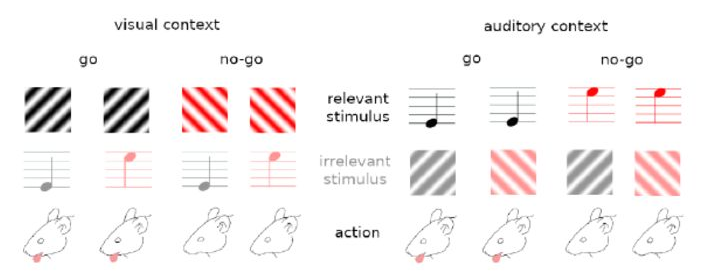Neuronal correlate of attention in the anterior cingulate and visual cortices
Hajnal M., Tran D., Szabó Z., Albert A., Safaryan K., Einstein M., Vallejo Martelo M., Polack P-O., Golshani P., Orbán G. (2023). Shifts in attention drive context-dependent subspace encoding in anterior cingulate cortex during decision making. bioRxiv 2023.10.10.561737
Effective task execution requires the representation of multiple task-related variables that determine how stimuli lead to correct responses. Even the primary visual cortex (V1) represents other task-related variables such as expectations, choice, and context. However, it is unclear how V1 can flexibly accommodate these variables without interfering with visual representations. We trained mice on a context-switching cross-modal decision task, where performance depends on inferring task context. We found that the context signal that emerged in V1 was behaviorally relevant as it strongly covaried with performance, independent from movement. Importantly, this signal was integrated into V1 representation by multiplexing visual and context signals into orthogonal subspaces. In addition, auditory and choice signals were also multiplexed as these signals were orthogonal to the context representation. Thus, multiplexing allows V1 to integrate visual inputs with other sensory modalities and cognitive variables to avoid interference with the visual representation while ensuring the maintenance of task-relevant variables.
Figure
Caption
Stimulus and reward structure in the set-shifting paradigm. Visual (gratings) and auditory (pure tones) are presented concurrently to mice and animals. Only one of the modalities is relevant for obtaining water reward. One of the stimuli from the relevant modality (top row) was designated as a ‘go’ signal, to which animals are expected to lick for water reward, while they were expected to withhold locking for ‘no-go’ stimulus.


